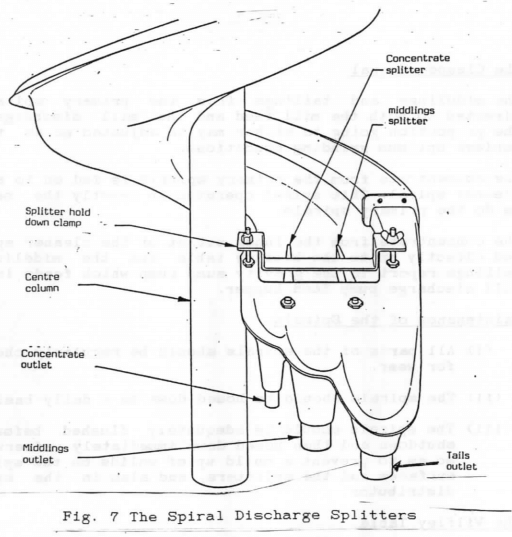- To participate in the 911Metallurgist Forums, be sure to JOIN & LOGIN
- Use Add New Topic to ask a New Question/Discussion about Gravity Separation/Concentration.
- OR Select a Topic that Interests you.
- Use Add Reply = to Reply/Participate in a Topic/Discussion (most frequent).
Using Add Reply allows you to Attach Images or PDF files and provide a more complete input. - Use Add Comment = to comment on someone else’s Reply in an already active Topic/Discussion.
Spiral Concentrator Circuit Circulating Load (4 replies and 2 comments)
Hi Naveen,
This all depends on the mass coming from Underflow, density, etc, the way described I have seen, most spirals I have worked with are good for 3 TPH ( stated on each spiral flight)with most metals and more with coal. They say they are good for a 40% density but this is trouble from what I have seen. If you know your mass is within reason it will work. Sprirals are very adaptable and can take a lot of variation and even if it did not work as expected. The good thing about them is that simple changes to pump flows and piping can happen fast.
Spiral Manufacturers say about Pulp density and feed rate that generally, low pulp density will produce high heavy mineral concentrate grades while high feed pulp densities will result in lower concentrate grades with higher recovery of heavy minerals.
Fluctuations in feed rate will affect the grade of the concentrate since the width of the concentrate band will change. All precautions should be taken to ensure a consistent feed to the spiral concentrator circuit.
They also say that Some spiral models use wash water to aid in the separation of heavy minerals. Wash water will fluidize the concentrated heavy minerals and allow lighter minerals to be released and carried in to the outside of the helix. Wash water also assists the flow of concentrate down the helix and in to the splitters. Wash water is needed to establish a consistent pattern of heavy mineral flow in the middle and lower turns of the spiral so that a dependable grade of concentrate can be made.
The amount of wash water required varies from 0.3 to 1.0 m3/hr per start, depending on the heavy mineral loading, the specific gravity and shape of the heavy minerals and the particle size distribution of the feed.
For balance loading and recovery of desired quality, sample may have to be tested with two stages classification in cyclones, changing the operating variables in the 3 stages for optimum loading of spirals. Base on that plant trial tests may have to be done if required with re-arrangement of spirals and if required addition of spirals as may be required.
Use the Social Share Bar on the Left. Tell everyone you can about https://www.911metallurgist.com/metallurgy/ It's FREE & GOOD.
I really thank you both for such a deep information about spiral concentrator....once again thank you
Hi Naveen,
Normally in design of spiral circuit design, the re-circulation load may be of similar quality and preferably less than the tph rate input from the main feed. On continuous process, it will reach a steady state condition. This loads can be calculated analytically.


Myself mineral processing engineer and am working on flow sheet development.... Am getting problem with maintaining circulating load in spiral concentrator circuit (rougher, scavenger & cleaner) followed by hydro cyclone? As we are giving hydro cyclone underflow to the rougher spiral, rougher concentrate to cleaner and rougher tailing to scavenger and finally we add the cleaner tails and scavenger tails to the hydro cyclone under flow where am facing the heavy load to rougher compare to previous load....so my doubt is at what stage the load will be constant to rougher spiral concentrator? , is there any wrong step i took in this circuit? How best i can make this circuit?
Thank you, Waiting for your earliest reply. Naveen